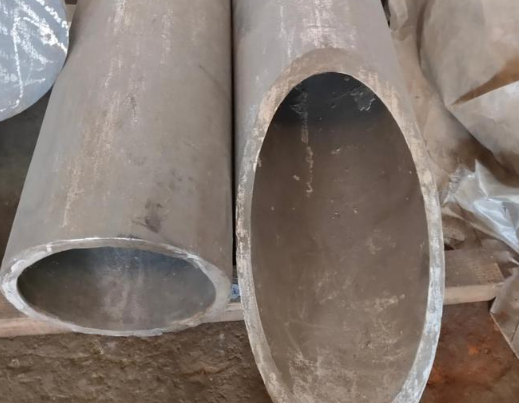The Importance of Pipe Beveling in Welding
Pipe welding is essential in industries like oil and gas, construction, and manufacturing. To ensure strong and durable welds, proper preparation is crucial. One of the most important steps in this process is pipe beveling, which involves removing the edges of a pipe to create an angled surface. This step significantly enhances weld strength, quality, and durability.
What Is Pipe Beveling?
Pipe beveling is the process of cutting or shaping the edges of a pipe at an angle before welding. This technique removes material from the pipe end, typically using tools like grinding machines, water jets, or flame cutters. The beveled edge creates a groove, such as a V-shape or U-shape, which ensures a better fit and improves the welding process.
Why Pipe Beveling Is Critical
1. Improves Weld Strength
Beveling ensures a strong and reliable joint by increasing the weld area. This additional surface provides better fusion, which reduces the chances of joint failure. Stronger welds are especially crucial in pipelines where joint integrity directly impacts the entire structure's safety and performance.
2. Enhances Weld Quality
A clean and well-prepared bevel allows the heat and filler material to distribute evenly during welding. The groove created by beveling promotes deeper weld penetration, resulting in a more consistent and robust weld joint. This leads to higher-quality welds that meet stringent industry standards.
3. Minimizes Deformation
Welding can cause metal deformation due to uneven heat distribution. Beveling helps by allowing heat to spread more evenly across the joint. As a result, the risk of distortion is reduced, ensuring a better fit and finish.
4. Supports Better Alignment
Proper beveling ensures that the pipe ends align correctly before welding. This alignment improves weld accuracy and reduces the need for adjustments during the process, saving valuable time and effort.
5. Reduces Maintenance Costs
Although beveling adds a preparation step, it lowers maintenance and repair costs over time. Beveled edges create stronger welds that are less prone to cracking or failure. This durability reduces the need for frequent repairs, saving money in the long run.
Types of Bevels and Their Applications
Different bevel shapes suit various welding requirements:
-
V-Bevel: Commonly used for thicker pipes to increase the weld area.
-
J-Bevel: Ideal for smaller pipes, requiring less filler material.
-
U-Bevel: Suitable for large-diameter or high-pressure pipes, offering superior strength.
Tools and Techniques for Pipe Beveling
The choice of equipment depends on the project’s requirements:
-
Handheld Grinders: Portable tools for small-scale beveling tasks.
-
Beveling Machines: Automated machines for faster and more precise cuts.
-
Plasma and Water Jets: Advanced options for beveling exotic metals or complex shapes.
To achieve a perfect bevel, operators must select the correct angle, maintain their tools, and follow consistent techniques. Proper tool maintenance ensures smooth cuts and prevents damage to the pipe.

Industry Relevance
Pipe beveling is indispensable in pipeline construction, particularly in high-pressure or high-fatigue environments. Applications such as risers and spool pieces demand impeccable weld strength, which begins with proper beveling. Additionally, understanding bevel geometry is crucial for achieving the best weld fit.
Conclusion
Pipe beveling is an essential step that significantly enhances the quality and durability of weld joints. By improving strength, reducing deformation, and ensuring proper alignment, it plays a vital role in the success of welding projects. Industries can benefit from reduced maintenance costs and improved safety by prioritizing beveling. Investing in the right tools and techniques ensures efficient beveling, helping meet high project standards.
For projects requiring automated solutions, advanced equipment offers precise and consistent beveling, ensuring superior welds every time. By recognizing the importance of pipe beveling, industries can achieve long-lasting, high-quality results in their welding applications.






 English
English Español
Español بالعربية
بالعربية











 Phone :
Phone :  Whatsapp :
Whatsapp :  Email :
Email : 


